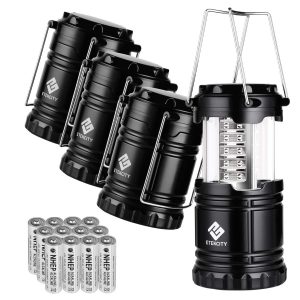 Eminent domain and Agenda 21 endeavors appear to be fostering an attack on not only property rights, but the act of private land ownership itself. Eminent domain was once rarely invoked by the federal government and when it was, the project had to serve a critical need to a substantial portion of the public. Today, American families are losing their land in eminent domain seizures used to expand bike paths, built green spaces for tourism, and to increase Bureau of Land Management (BLM) holdings in order to “protect the land.”
Eminent domain and Agenda 21 endeavors appear to be fostering an attack on not only property rights, but the act of private land ownership itself. Eminent domain was once rarely invoked by the federal government and when it was, the project had to serve a critical need to a substantial portion of the public. Today, American families are losing their land in eminent domain seizures used to expand bike paths, built green spaces for tourism, and to increase Bureau of Land Management (BLM) holdings in order to “protect the land.”
A small portion of America is waking up to slightly-veiled Agenda 21 threat in the United States. The United Nations dictate fits nicely into the land grab demeanor by the federal government ongoing in Western states and increasingly around the country.
The Agenda 21 United Nations program is a voluntary, non-binding action plan which is allegedly focused solely on sustainable development. Adopted by 178 countries in 1992, the plan is based upon a program to abolish poverty and protect “fragile environments” by “properly” managing cities. Some charge the program wants to push all citizens into cities.
America is a “signatory” country to Agenda 21. Since the plan is a non-binding statement and not a treaty, a vote on the matter was deemed unnecessary. In the United States, more than 500 major- and moderate-sized cities are members of an international sustainability organization that reportedly supports the implementation of Agenda 21.
Agenda 21 was delved into deeply in a segment of The Blaze TV’s For The Record. The Republican Party opposed Agenda 21 in its 2012 platform, stating, “We strongly reject the U.N. Agenda 21 as erosive of American sovereignty.” Additionally, the Alabama legislature passed a bill banning participation in Agenda 21. It was signed by the governor.
The impact Agenda 21 could have on the very foundation of America is immense, yet the bulk of society still knows little to nothing about the United Nations plan. One survey by the American Planning Association showed that 85 percent of Americans said they didn’t know enough information about Agenda 21 to form an opinion.
The Post Sustainability Institute was created to research the impact of the Agenda 21 plan on liberty in United States. The group tracks the progression of the program and forecasts its most likely results if the project proceeds unchecked by freedom-loving Americans. The group is non-partisan and is not linked to any governmental entity.
Rosa Koire, the executive director of the group, also authored Behind The Green Mask: UN Agenda 21 to further educate Americans about the dangers of the plan. Koire and Michael Shaw, of Freedom Advocates, filed an Agenda 21 lawsuit to stop the Plan Bay Area project. She was a district branch chief at the California Department of Transportation for almost three decades.
One Western state is mounting a fight against the federal government and its increasing control of public lands. Utah is preparing to seize 31.2 million acres of its own land back from the government before the end of 2014. Eminent domain and massive tracts of public land have left many Western states with far less land for private business, ranching, and other agricultural activities which enhance the tax base. Utah is now bucking the powers that be and is attempting to turn the tables on the federal government using the Transfer of Public Lands Act.
The unprecedented land grab reversal by Utah could start a chain reaction and prompt a reversal of the federal government land ownership dominance in the West. In 2012, Utah Governor Gary Herbert signed the Transfer of Public Lands Act into law. The statute demands that Washington, D.C. relinquish its strangle-hold on land ownership in the state. Currently, the federal government owns more than half of the 54.3 million acres of land in Utah.
The Utah Transfer of Public Lands Act was a piece of legislation born out of frustration not only in the state, but with its neighboring entities. Utah may have one of the highest federal government owned land ratios in America, based as 64.5 percent, but the ownership percentages in other Western states is also significant. In Kansas, the federal government owns more than 50 percent of real property, curtailing small businesses and agricultural advances there as well.
Although the federal government has yet to give any real response to the Transfer of Public Lands act demands, Representative Ken Ivory remains undeterred in his quest to put the ownership of Utah lands back in the hands of Utah residents, ranchers, and business owners.
Representative Ken Ivory had this to say about the lack of willingness to comply with the Transfer of Public Lands Act dictates, by the federal government, “That’s what you do any time you’re negotiating with a partner. You set a date. Unfortunately, our federal partner has decided they don’t want to negotiate in good faith. So we’ll move forward with the four-step plan that the governor laid out.” Representative Ivory, who also serves as the head of the American Lands Council, also added, “We’re going to move forward and use all of the resources at our disposal.”
Earlier this month a financial review of the state takeover of public lands in the state reportedly indicates that such a venture would be fiscally feasible. The “An Analysis of a Transfer of Federal Lands to the State of Utah” review, a 784-page document, stated that Utah was financially capable of managing the massive tracts of land currently under the control of the Forest Service and the Bureau of Land Management – BLM.
“I expect that public discussion will be well served by this report. It shows the complexities and connections between Utah’s robust economy and the great quality of life Utahans enjoy,” Governor Herbert said in a statement after the report was released.
Fiscal analysts at three universities took 18 months to develop the feasibility of enacting the Transfer of Public Lands Act in Utah. The researchers found that the state would have to spend $280 million to maintain and manage the land currently owned by the federal government, but the revenue generated from the ownership of the lands would reportedly be $331.7 million. The revenue would be garnered primarily from oil and gas royalties and mineral resources development. Since the federal government owns the vast majority of land in the state, Utah sees only half of the royalty payments from the oil, gas, and mineral revenues.
The Utah Transfer of Public Lands Act study also revealed that while small amounts of federal land ownership in a state “could” stimulate the economy, when the percentage reaches at least 40 percent of such ownership, a “drag” on economic growth occurs. According to the study, 20 of the 29 counties in Utah have more than 45 percent of the land owned by the federal government.
Utah Representative Rob Bishop supports regaining ownership of federal land in the state and the fiscal report. “This data will be a helpful resource as we continue to work toward resolving some of the biggest challenged facing public lands policy in the state.”
Do you think the federal government owns too much land in Utah and other states? How concerned are you about Agenda 21 happening in America?

 3-Pack Mashed Potatoes Case - 216 Servings
3-Pack Mashed Potatoes Case - 216 Servings  4-Pack Portable LED Camping Lantern Flashlight
4-Pack Portable LED Camping Lantern Flashlight